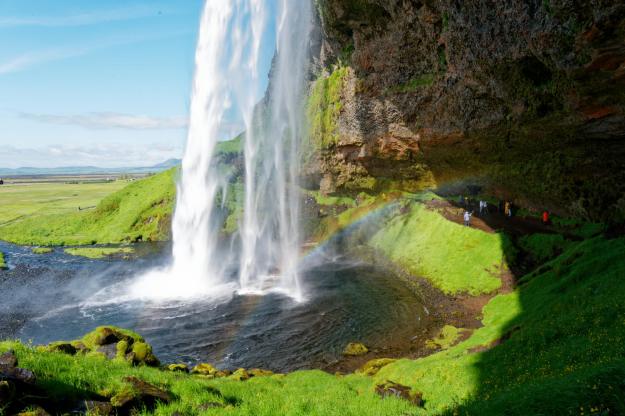Saturday February 26, 2022 – The hotel breakfast was the first opportunity we’d had for A Decent Cup Of Tea since 4am the previous day, so a couple of mugs of Twining’s finest Earl Grey were a welcome part of our breakfasts. We’ve brought a decent number of tea bags with us, and I think we’ll end up taking quite a few back with us, as the opportunities for cups of tea seem to be limited to breakfast time this week.
After breakfast and a short pause to work out whether the weather was going to be right for a day’s relentless tourism (it had rained pretty copiously overnight, it seemed), we decided to get out and get on with the gawping. This turned out to be the right decision, as it was a very good day, full of rewarding sights, or, as I think of them, photo opportunities.
Jane constructed a route based once again on the “Walking in Lanzarote” book, which, those of you who followed the link in yesterday’s effusion will know, suggests some driving tours as well as walks. Our first destination was El Golfo, which has a rugged coastline upon which waves regularly smash themselves, driven by a ceaseless and brisk wind.
View this post on Instagram
A short walk along a coastal path brings you to a view over a green lagoon, the Charco de los Clicos) .

The green colour comes from particular types of algae which grow there.
The next stop was a place called Las Salinas, which – the clue is in the name – is the site of very extensive salt pans. Very extensive.

It’s difficult to do justice to the place through photos, but it’s striking sight.



Our next stop was to be a volcano called El Cuervo, but en route via Femés, which gave an opportunity to visualise how windy the place is:
View this post on Instagram
we stopped to see a couple of interesting sights, such as a roundabout with huge camel statues on it.

This roundabout marks the start of an area called La Geria, which offers a striking insight into the local wine-growing, which is a significant part of Lanzarote’s industry. Almost wherever we went, we could see the traditional near-circle walls constructed from lava rock.

Each circle surrounds a deep pit filled with lava gravel. A vine is planted in each circle. The walls offer protection from the north-easterly trade winds; and the gravel (because it’s volcanic and therefore somewhat porous) leads water into the soil to irrigate the vine. And you can see that the circles are extensive, stretching right up hillsides. Interestingly, also on show was a more modern take on viniculture.

Straight walls are replacing the circles, and are more efficient because less wasteful of space, and also easier to harvest using mechanical aid.
Our route continued through a desolate, rocky landscape.

This is reminiscent of the lava fields we saw in Iceland; and, similarly, the only thing that can grow here appears to be a lichen.

Shortly thereafter we arrived at El Cuervo, a volcano which is worth a visit because you can actually walk into the crater. It’s about a mile from the car park to the volcano, and you can walk around the whole of the outside of the volcano if you want. But time was running short so we headed straight into the caldera,

which is quite impressive.

We made a note to visit a neighbouring volcano, called Caldera Colorada, because – again the clue is in the name – the rock is brightly coloured. However the light wasn’t going to be too favourable, hence it will be better to visit another day. However, we decided that we could make time to visit a wine museum, somewhat north of La Geria.
Exiting the La Geria area takes you through a village called Masdache, where the lava flow was of a different sort, pahoehoe lava, characterised by surface ripples created when molten lava flowed beneath the solidified outer crust. (The caldera at El Cuervo, by contrast, was built up from “spatter” – rocks thrown up during an eruption and settling back into a volcano-sized heap.)

And so it was that the El Grifo wine museum was our next stop. El Grifo has been a site for wine making on Lanzarote since 1775 – it is the oldest working winery in the Canary Islands (and one of the ten oldest in Spain). The existence of the museum is down to our man César Manrique, who prevailed upon the owners to preserve old equipment and create the museum during modernisation. It’s an interesting place to wander around.

There’s a cooperage display,

many different types of wine press

and I’m particularly pleased with this picture. It’s a corker! 
(Yes, a machine for inserting corks, itself inserted into one of the old wine storage tanks.)
El Grifo also has quite a remarkable cactus garden.

Our final call en route back to the hotel was at the Monumento al Campesinos, a museum
dedicated to the island’s farming history,

and also the site of a substantial work by Manrique, the Monumento a la Fecundidads.

As well as the view (above) of the museum buildings, the Manrique work also gives a pleasingly zen view back towards the road.

With the light fading and the threat of rain in the air, we headed back to the hotel for a light bite or two and a gin or two. Thus ended a surprisingly full day – very enjoyable and with a good overview of some of the key sights on the south of the island. We haven’t worked out a full plan for tomorrow, so you’ll just have to check back and find out what we did, won’t you?


























































